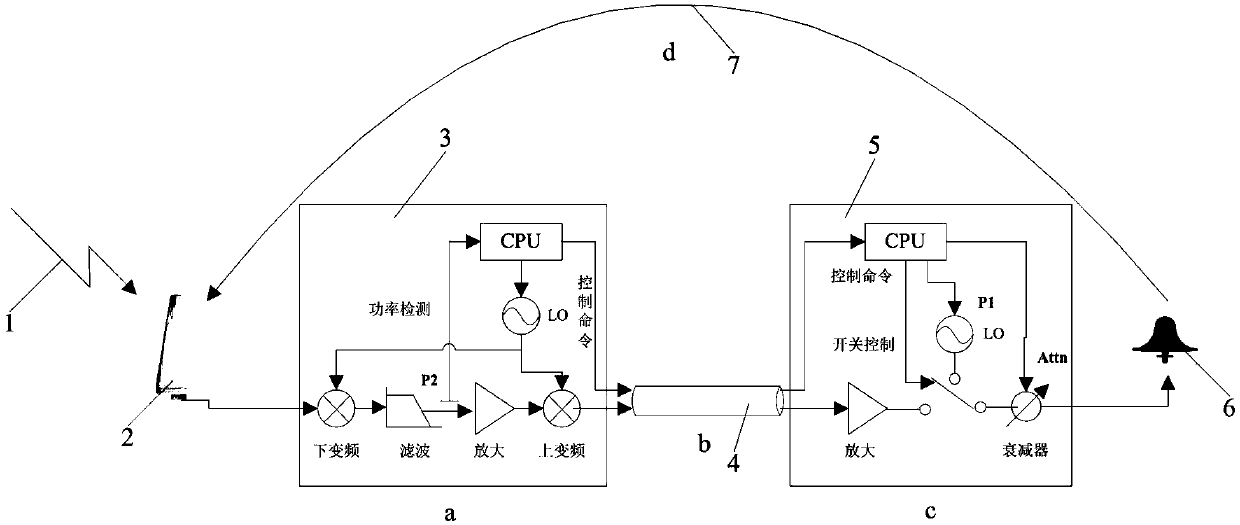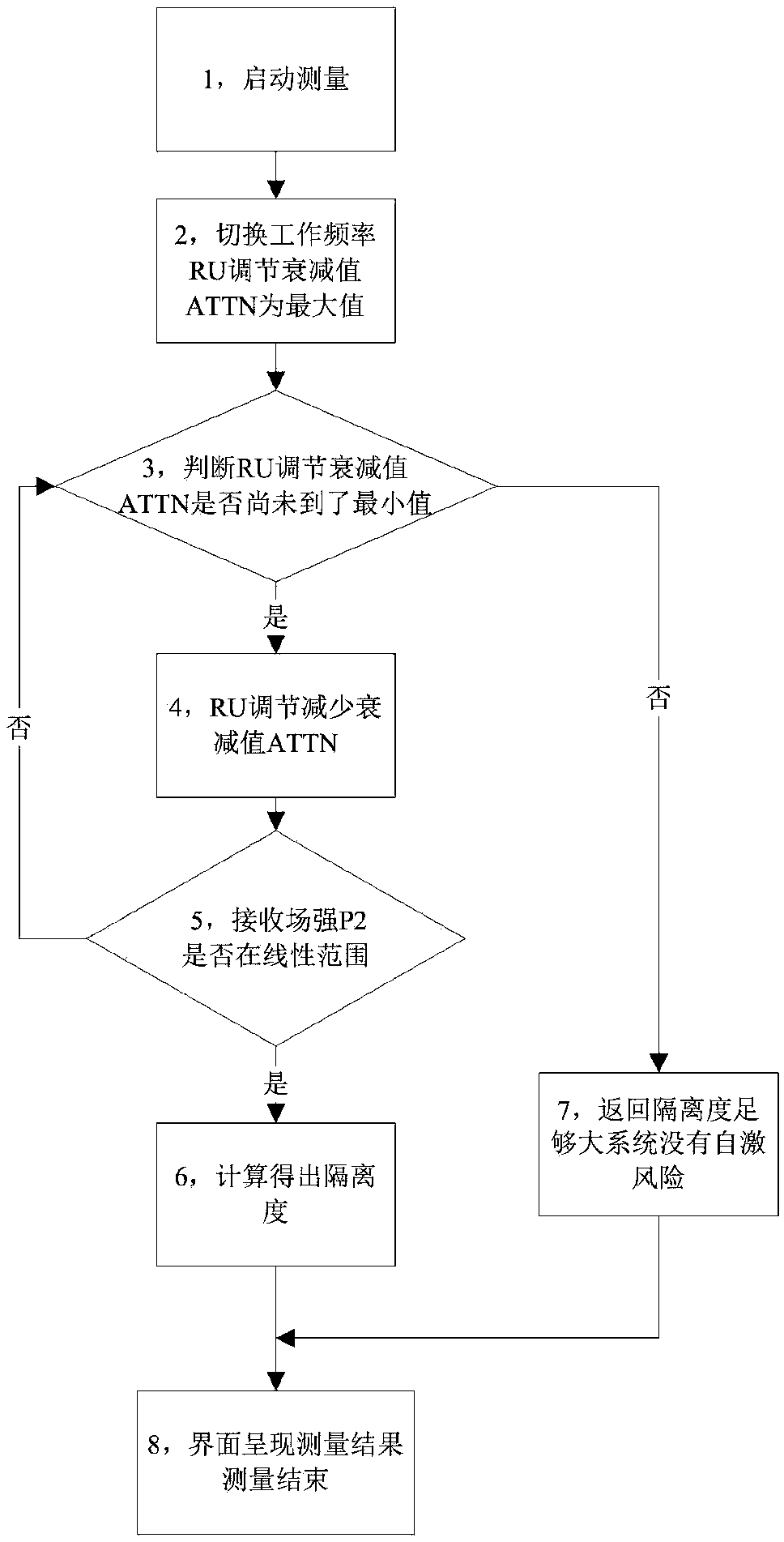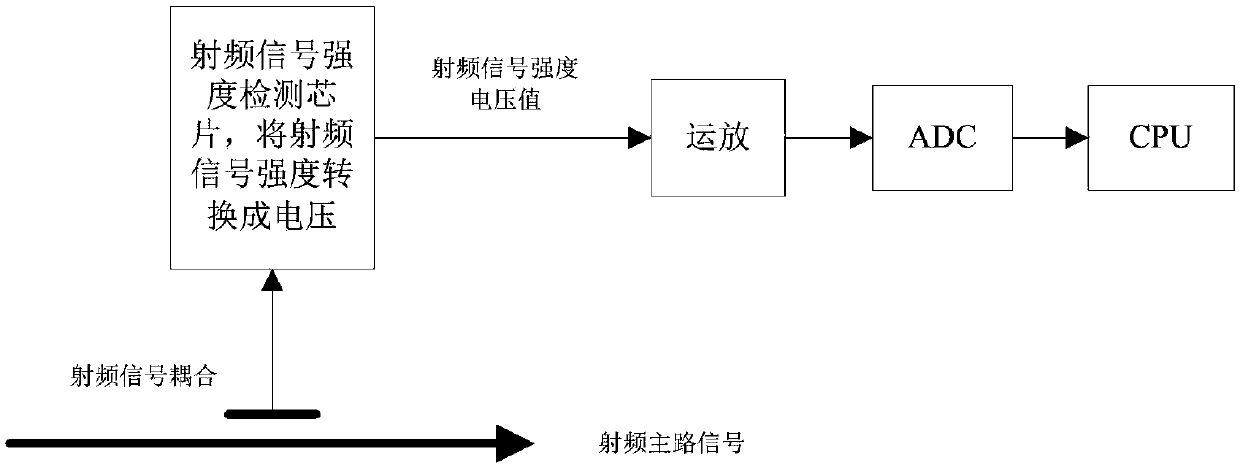Measurement method of degree of isolation between antennas
A measurement method and antenna spacing technology, which is applied in the direction of measurement devices, measurement of electrical variables, transmission monitoring, etc., can solve the problems of inaccurately obtained isolation, hidden dangers caused by strong self-excitation, and inability to be commercially used on a large scale. Customer satisfaction, enhanced system stability, and improved user experience
- Summary
- Abstract
- Description
- Claims
- Application Information
AI Technical Summary
Problems solved by technology
Method used
Image
Examples
Embodiment 1
[0037] In order to prevent self-excitation of the system, the isolation between antennas is usually roughly estimated according to the space loss model during engineering installation, but the external environment, multipath reflection, antenna directivity and other factors make it impossible to accurately obtain the isolation. Bring trouble to engineering construction. Or the system is in weak self-excitation (critical self-excitation), which may cause strong self-excitation during installation and commissioning, which may cause strong self-excitation during long-term network operation in the future. One method is to use ICS (adaptive interference cancellation) technology, which can improve the stability of the system, but this method is very expensive and cannot be commercialized on a large scale.
[0038] The method proposed in this embodiment is cheap and easy to implement, and has good accuracy. Without increasing the cost of equipment, it provides a measurement data of ...
Embodiment 2
[0046] On the basis of Embodiment 1, this embodiment discloses a specific method for measuring the isolation between antennas.
[0047] The wireless coupling indoor coverage system consists of a donor antenna, a first-stage amplification device MU, a radio frequency feeder, a second-stage amplification device RU and a coverage antenna. Ideally, all the RF signals output by the coverage antenna will cover the area to be covered, but in reality, some signals will be fed back to the donor antenna from the space, so a feedback loop is introduced into the system, which is inevitable in actual engineering of.
[0048] The condition that the whole system is not self-excited is that the sum of the gains is less than the sum of the attenuations, and a 15dB margin is left. Therefore, spatial isolation between antennas is required (unit: dB)
[0049] L2 > G1 + G2 - L1 + 15
[0050] Among them: G1 and G2 are the working parameters of the equipment, which can be read directly; L1 is the...
PUM
 Login to View More
Login to View More Abstract
Description
Claims
Application Information
 Login to View More
Login to View More - R&D
- Intellectual Property
- Life Sciences
- Materials
- Tech Scout
- Unparalleled Data Quality
- Higher Quality Content
- 60% Fewer Hallucinations
Browse by: Latest US Patents, China's latest patents, Technical Efficacy Thesaurus, Application Domain, Technology Topic, Popular Technical Reports.
© 2025 PatSnap. All rights reserved.Legal|Privacy policy|Modern Slavery Act Transparency Statement|Sitemap|About US| Contact US: help@patsnap.com



